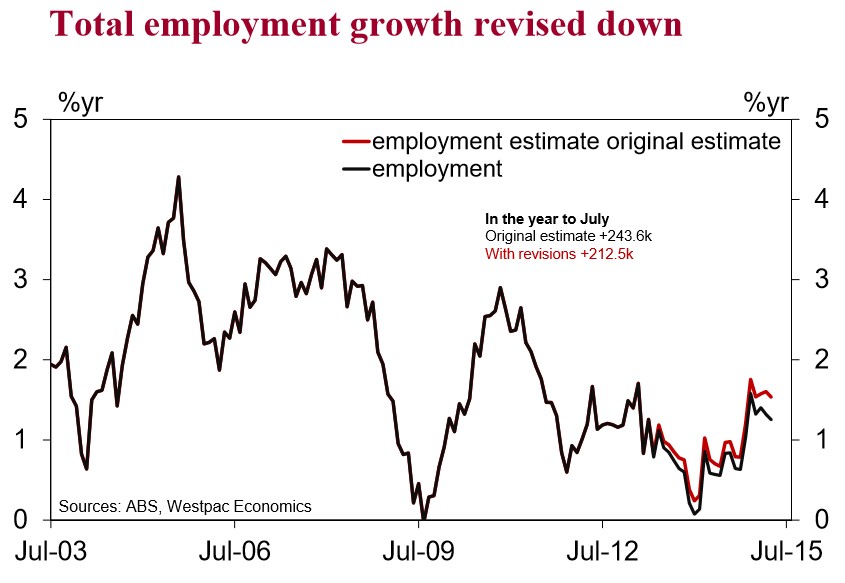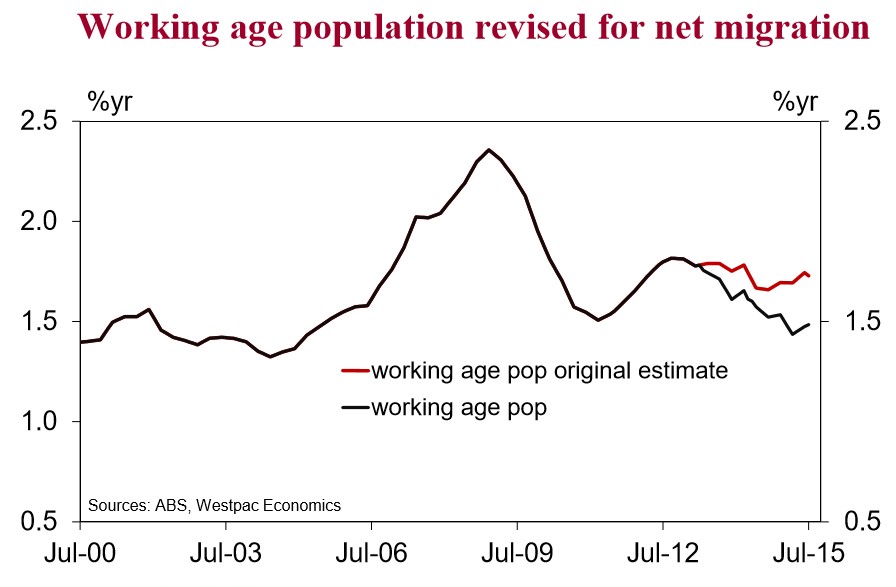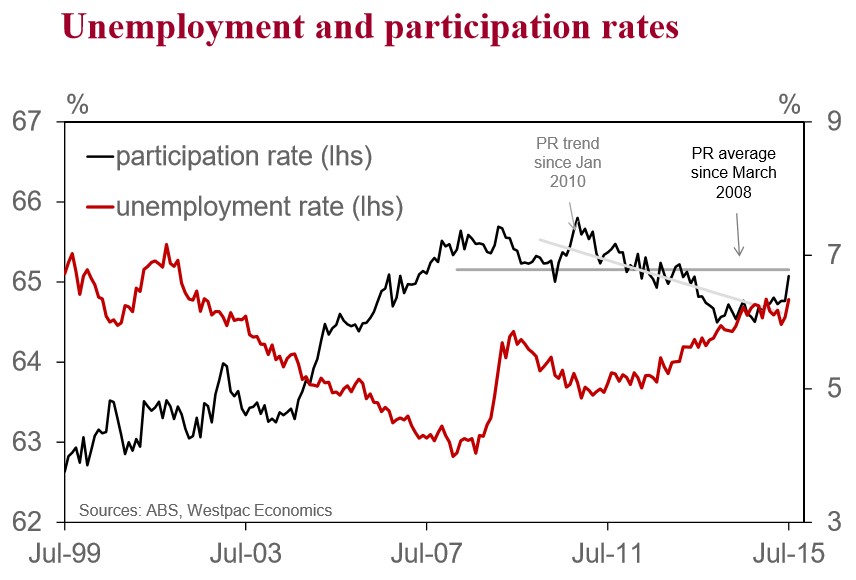From Westpac’s Justin Smirk:
The Labour Force Survey is based on estimates of the civilian population aged 15 years and over (population benchmarks) which in turn are derived from the Estimated Resident Population (ERP). Since ERP estimates lag the Labour Force by nine months, the Labour Force population benchmarks are created by projecting forward the most recent ERP estimates using on the historical pattern of each population component – births, deaths, interstate migration and net overseas migration (NOM). Projected estimates of NOM are supplemented with other data sources such data from the Department of Immigration & Border Protection (The Outlook for Net Overseas Migration).
From the February 2015, population rebenchmarking is undertaken quarterly in the February, May, August and November issues apart from May 2015. When there are swings in migrant flows these projections can be subject to significant revisions.
The ABS just released the population benchmark revisions today and it had a significant impact on population & employment estimates. Total employment is now reported to have grown 212.5k/1.8%yr in the year to July vs. original estimate of 243.6k/2.1%yr.

Working age population growth is now 1.5%yr vs. original estimate of 1.7%yr.

With revisions, total employment still surged 37.9k in July (originally 38.5k) well above market expectations for a 10k rise and more than double Westpac’s forecast for +15k. Estimates ranged from –17k to +25k. But now the annual pace is a more reasonable 212.6k/1.8%y in the year which is more in line with the leading indicators that the original estimate of 243.6k/2.1%yr.
Unrounded the unemployment rate was 6.22% (originally 6.23%) in July which is a large jump from 6.10% (unrevised) reported in June.
The reason for the large leap in unemployment was a surge in participation which is back to the average since March 2008, the first time since early 2013 that it has been around average. The last time we saw such a large rise in participation was in September 2012. This was followed by a 0.15ppt fall in participation in October then a 0.12ppt fall in November.

Three things stand out in the July survey. Firstly, just about all of employment gains were in NSW, +29.5. Secondly, it was mostly female employment, male employment rose just +4.7k. And finally, NSW also reported the largest surge in participation again in female participation. Something is not right when all of the gains come from one state, from one gender and is associated with an outsized rise in participation.
The leading indicators point to some volatility in employment growth with a sub 2%yr overall trend pace. Westpac’s Jobs Index correctly highlighted some upside momentum in the total employment through late 2014, up to around a 2%yr by year end before a pause in early 2015 to sub 2%yr pace then an acceleration back up to around 1¾ % in Q2/Q3. The index is now pointing to a near term moderation.
Westpac’s –15k forecast for the change in total employment in August will take the annual pace to 1.7%yr from 1.8%yr in July.
We are also expecting a statistical correction in the participation rate back to 64.8%, from 65.1%. As a result, labour force is forecast to fall by 32.6k (it rose 76.2k in July) which will see the unemployment rate fall to 6.2% from 6.3%.

